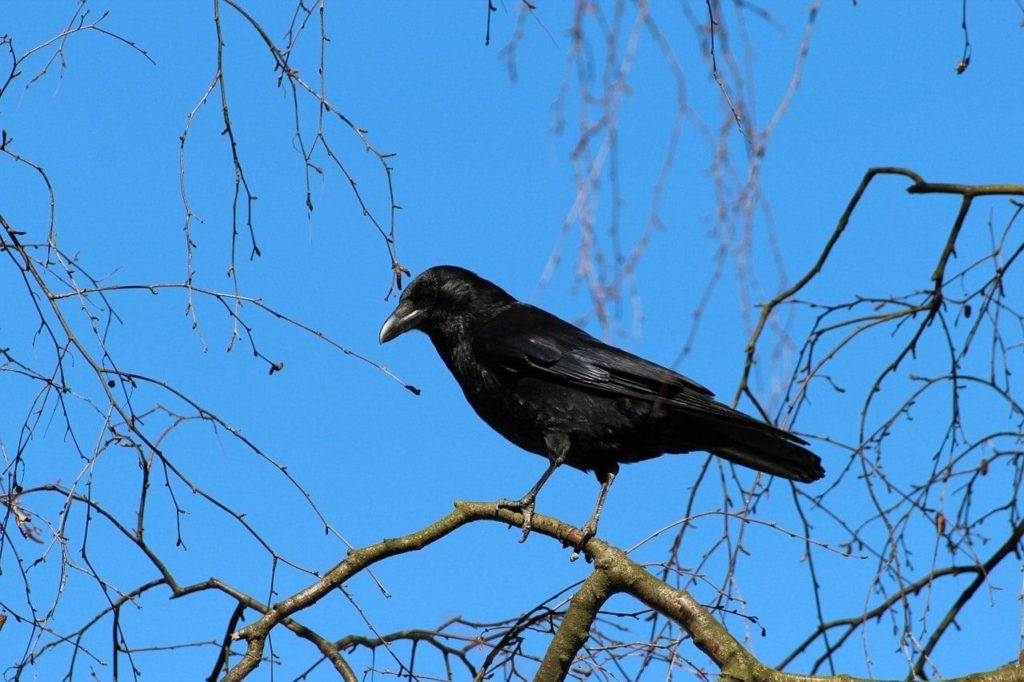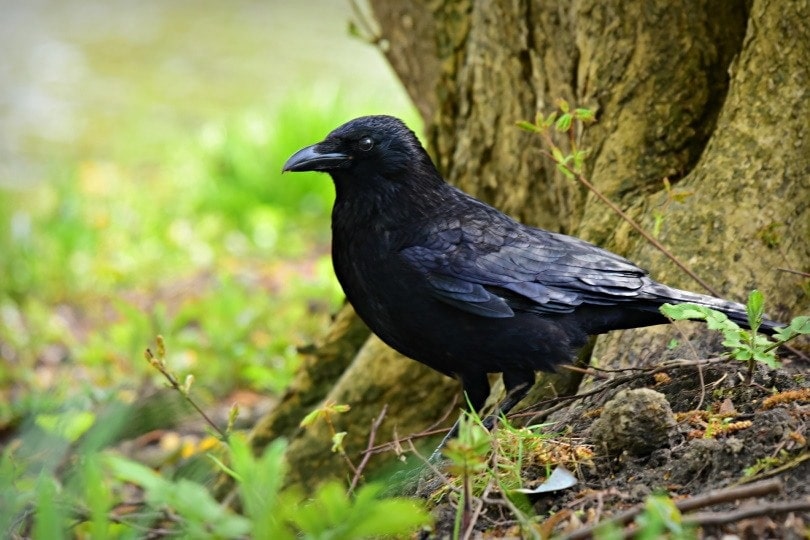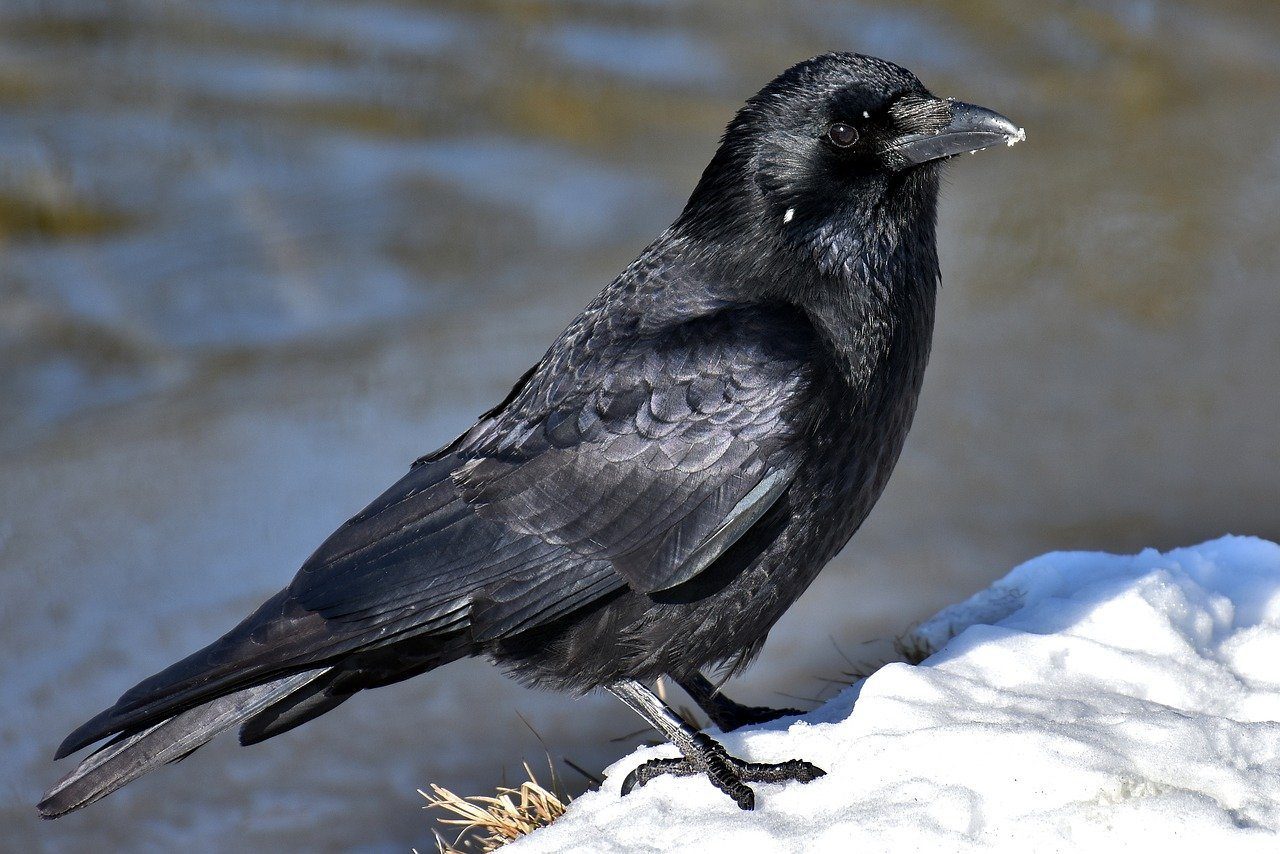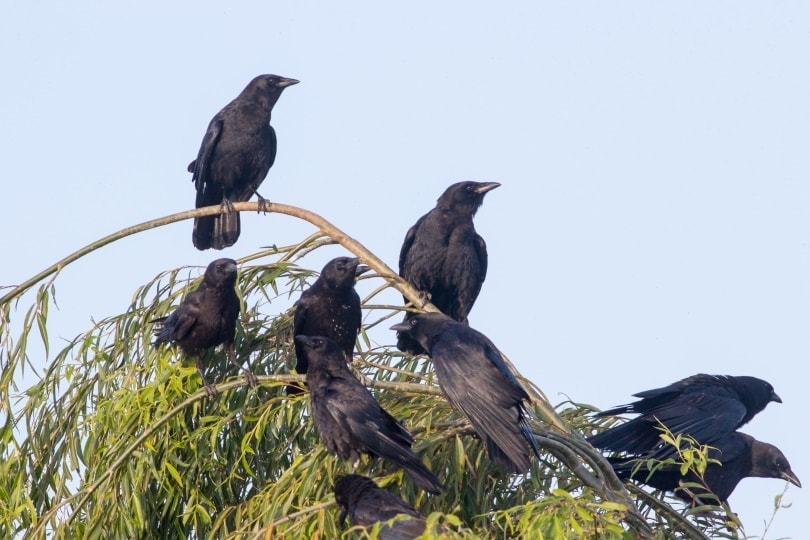How Long Do Crows Live? (Average & Maximum Lifespan)
Last Updated on

Crows belong to the Corvidae bird family. These medium-sized blackbirds measure about 17 inches in length and are found throughout the world, with the exception of Antarctica. In North America, wild crows are known for their pesky behavior – destroying crops, cawing loudly, and stealing eggs from other bird’s nests. This reputation means that crows can live a lot longer as pets than they do in the wild, but their lifespan depends on a number of conditions.

What’s the Average Lifespan of a Crow?
Wild crows live an average of 7-8 years, while crows in captivity can live a lot longer, reaching ages as old as 59 years. The life expectancy of a crow depends on a variety of environmental factors, including the availability of food, habitats, and the predator population.
While wild crows average a lifespan of 7-8 years, the oldest living wild crow was 29 years old at the time of his death. While there is documentation of longer lifespans in captive crows, crows are wild animals and don’t generally do well when kept as pets. Long-living crows in captivity are found in zoos or aviaries where special care has been taken to ensure they live similarly to how they would in the wild.

Why Do Some Crows Live Longer Than Others?
1. Nutrition
Crows are omnivores who depend on access to both animals and plants to stay healthy. Plant sources of nutrition for crows include grains, seeds, nuts, and fruits, while tiny species of insects, rodents, frogs, and worms round out the rest of their diet.
These birds are opportunistic feeders who eat what’s available and aren’t picky about their food. When food sources are scarce, they are known to scavenge garbage cans and dumpsters for scraps.
2. Environment and Conditions
Crows are known for being very adaptable to different environments. It’s why they are found in such a diverse range of habitats around the world. They inhabit urban areas, tidal flats, forests, savannah grasslands, and arctic tundra.
Crows’ survival depends on their ability to elude predators. In their efforts to do this, crows have increasingly moved into urban and suburban areas with large human populations as there are no natural predators in these areas.

3. Living conditions
Crows generally choose an environment with close proximity to trees to call home. However, they aren’t picky and will be happy to nest on house rooves if provided the opportunity.
When kept in captivity, crows require spending at least a few hours each day flying, meaning they only do well inside a properly built aviary. In many countries, it’s illegal to keep crows as pets in a cage.
- Related: Do Crows Migrate?
4. Size
Crows measure an average of 16-21 inches in total length. About 40% of this overall length is their tail. The wingspan of a crow measures between 33 and 39 inches overall.
There are over 40 different species of crows that exist around the world. The American Crow is the smallest, averaging about 17.5 inches in length, the Fish Crow averages 19 inches and the common raven measures around 27 inches.
Crows weigh between 12 and 57 ounces, with weights varying greatly within species.

5. Breeding and Mating
Male and female crows pair together for life and build nests in evergreen or deciduous trees. Elevated, horizontal branches are favorite nesting spots.
Crows build their nests during the breeding season in late March and April. Egg incubation lasts for approximately 18 days, with hatchlings appearing between early May to June. At this time, male crows are known to become extremely territorial, protecting the nest while retrieving food for their mate and his offspring.
The Life Stages of a Crow
Female crows lay four to five eggs at a time and incubate them for 18 days. Chicks remain in the nest for four weeks. Crows are cooperative breeders, meaning that male crows remain close to the nest, retrieving food for their mates and young while protecting them from predators.
After four weeks, chicks are able to leave the nest for short periods, but their parents will continue to feed them until they are about 60 days old.
Once they have reached 60 days of age, hatchlings are expected to leave their parents and fend for themselves. While they’re not fully grown, they are considered mature birds at this point.

How To Tell a Crow’s Age
It is very difficult to determine a crow’s exact age. The maximum lifespans for crows discussed above (29 years in the wild and 59 years in captivity) are based on anecdotal evidence from people who interacted with these birds for long periods of time. There are very few reliable sources of information on a crow’s lifespan.
Juvenile crows can be distinguished from adults by their eye color. Immature crows have a chestnut brown iris, while the iris of an adult’s eye is pure white. Nestlings have blue eyes, shorter wings, and a shorter tail than mature birds.

In Conclusion
While some studies suggest that crows may live very long lives, the average lifespan of a crow is between 7 and 9 years. There is anecdotal documentation that shows a wild crow living 29 years and a domestic crow living 59 years, but these reports are unconfirmed. Crows are wild animals, so their lifespan depends on several factors, including food availability and predation levels. They are hardy birds that are well adapted to scavenging and living in a variety of habitats.
Featured Image Credit: 127071, Pixabay
About the Author Robert Sparks
Robert’s obsession with all things optical started early in life, when his optician father would bring home prototypes for Robert to play with. Nowadays, Robert is dedicated to helping others find the right optics for their needs. His hobbies include astronomy, astrophysics, and model building. Originally from Newark, NJ, he resides in Santa Fe, New Mexico, where the nighttime skies are filled with glittering stars.
Related Articles:
How to Clean a Refractor Telescope: Step-by-Step Guide
How to Clean a Telescope Eyepiece: Step-by-Step Guide
How to Clean a Rifle Scope: 8 Expert Tips
Monocular vs Telescope: Differences Explained (With Pictures)
What Is a Monocular Used For? 8 Common Functions
How to Clean a Telescope Mirror: 8 Expert Tips
Brightfield vs Phase Contrast Microscopy: The Differences Explained
SkyCamHD Drone Review: Pros, Cons, FAQ, & Verdict
